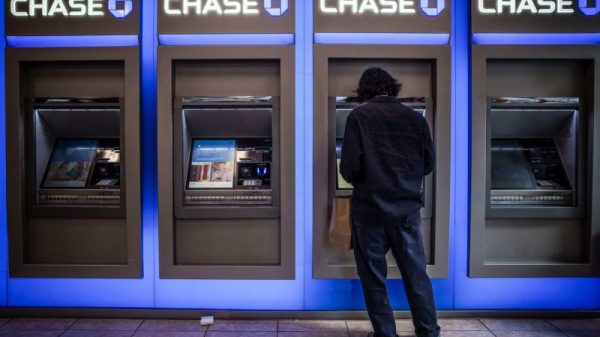Sortino Ratio: explanation and practical application
The Sortino ratio is a metric used in finance to assess the performance of an investment or portfolio in relation to the risk involved, particularly the volatility associated with negative returns or losses. It is a modification of the Sharpe ratio. Still, unlike the Sharpe ratio, which takes into account both upward and downward volatility, the Sortino ratio solely concentrates on the downside volatility.
Sortino Ratio Formula
The formula is as follows:
SR= (R – T) / D
R represents the mean yield of the investment or portfolio during a specific time frame.
T stands for the desired or minimum satisfactory yield, typically considered as zero or the rate without risk.
D is the measure of the downside volatility, which determines the fluctuations in negative returns. It is computed as the square root of the average of squared negative returns.
The Sortino ratio gauges the extent to which an investment or portfolio rewards investors for taking on the risk of loss. A higher ratio signifies a more favourable risk-adjusted performance, as it indicates that the investment is generating greater returns relative to its downside risk.
Conversely, a lower Sortino ratio implies that the returns of the investment do not adequately compensate for the volatility associated with negative returns.
What does the Sortino Ratio tell us?
Investors and portfolio managers often use the Sortino ratio to compare different investment options, assess the performance of a portfolio, or determine whether a particular investment aligns with their risk tolerance and investment objectives.
However, like any performance measure, the Sortino ratio should be used in conjunction with other metrics and should not be the sole factor in making investment decisions.
What is the difference between Sortino and the Sharpe Ratio?
The Sortino Ratio is a variation of the Sharpe ratio used to measure the risk-adjusted return on a portfolio. It compares the performance of the downside deviation rather than the overall standard deviation.
Both the Sortino ratio and the Sharpe ratio are risk-adjusted performance measures utilized in finance to evaluate the return of an investment or portfolio in relation to its risk.
Although they share similarities, they differ in their approach to risk assessment and the type of volatility they emphasize. The primary distinctions between the Sortino ratio and the Sharpe ratio are as follows:
The Sharpe ratio incorporates both upside and downside volatility when assessing risk. It takes into account the standard deviation of the entire return distribution, which encompasses both positive and negative returns.
On the flip side, the Sortino ratio only considers the downside risks. It takes into account the degree of variation in negative returns, which indicates the level of uncertainty associated with losses.
In contrast, the Sharpe ratio considers the degree of variation in the entire distribution of returns (including both positive and negative returns) as a measure of risk.
The Sortino ratio, however, utilizes the downside deviation, which is the variation in negative returns alone, as an indicator of risk. It disregards the uncertainty linked to positive returns.
Unlike the SR, the Sharpe ratio incorporates the risk-free rate (typically the return on a risk-free investment such as a government bond) as the minimum acceptable return (referred to as “Rf”) in its calculation. This represents the return an investor could expect to achieve without taking on any risk.
The SR uses a target return (denoted as “T”) as the minimum acceptable return. This target return is typically set at zero or the return required to meet specific investment goals.
Example of using the Sortino ratio
Here is an example of using Sortino Ratio to compare the risk-adjusted performance of two investment portfolios: Portfolio A and Portfolio B.
Portfolio A:
Average Return (R): 8% per year
Downside Deviation (Volatility of Negative Returns): 4.5% per year
Minimum Acceptable Return (T): 0% (we assume the investor wants to avoid any negative return)
Portfolio B:
Average Return (R): 10% per year
Downside Deviation (Volatility of Negative Returns): 6% per year
Minimum Acceptable Return (T): 0% (same as Portfolio A)
Now, let’s calculate the ratio for both portfolios:
Portfolio A – Sortino Ratio (SR):
SR= (R – T) / Downside Deviation
SR = (8% – 0%) / 4.5% = 8% / 4.5% ≈ 1.78
Portfolio B – Sortino Ratio:
SR = (R – T) / Downside Deviation
SR = (10% – 0%) / 6% = 10% / 6% ≈ 1.67
Interpretation of Sortino Ratio formula
In this example, Portfolio A has a Sortino ratio of approximately 1.78, while Portfolio B has a ratio of approximately 1.67. A higher Sortino ratio indicates a better risk-adjusted performance, as it means the portfolio generates higher returns relative to the downside risk (volatility of negative returns).
Based on the Sortino ratio, Portfolio A has a slightly better risk-adjusted performance than Portfolio B. It achieves a higher return for each unit of downside risk compared to Portfolio B. Therefore, if the investor’s main concern is to avoid losses and prefers a higher SR, Portfolio A might be considered more favourable.
It’s important to note that this is just one aspect of evaluating investment performance, and other factors such as investment objectives, time horizon, and overall risk tolerance should also be considered when making investment decisions.
Additionally, historical performance is not indicative of future results, and past volatility may not necessarily reflect future volatility. Professional advice and a comprehensive analysis of each portfolio’s characteristics are essential for making informed investment choices.
What is a Good Sortino Ratio?
This ratio increases as the expected risk-adjusted returns increase, assuming everything else remains constant. A higher Sortino ratio indicates that the return per unit of downside risk is higher, whereas a lower ratio suggests lower returns in relation to negative risk.
According to theory, investors should demand a higher minimum rate of return as the level of risk increases. Therefore, a higher SR must provide higher returns to compensate for the risk, and vice versa. However, since this ratio relies on historical data, it is an imperfect predictor of future performance.
The post Sortino Ratio: explanation and practical application appeared first on FinanceBrokerage.


































